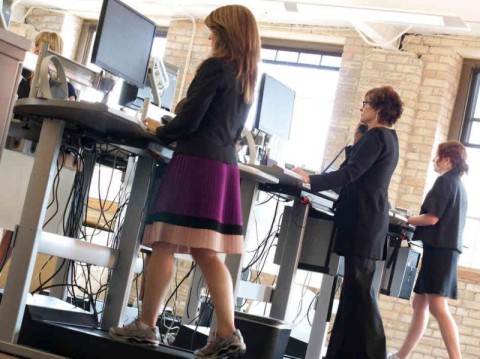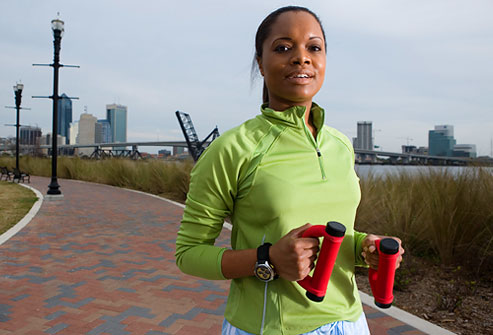A commitment to consistent exercise is indispensable for long-term weight loss. But so many obstacles are in our way.
The good news is that the calories you expend during the 23 or more hours when you’re not exercising can by far exceed the calories you can burn from just one hour of intense exercise. You just have to be committed to MOVING and USING these muscles of yours.
Scientists call it the “N.E.A.T.” or Non-Exercise Activity Thermogenesis effect.
NEAT happens when you generate heat from daily activities that don’t count as exercise, but burn calories all the same.
The calorie burning effect you get from N.E.A.T. is added on top of your basal metabolic rate (BMR). The BMR counts only those calories you use for internal metabolic activities when you’re totally at rest. Women usually burn 1,000 to 1,400 calories a day to just support their basic needs. Men need a little bit more, burning up to 1,550 calories a day as an average.
How N.E.A.T. you are however varies widely from person to person – it can account for between 15 and 50% of your total daily caloric expenditure. That’s why N.E.A.T. makes a big difference in determining body weight.
In fact, one of the proven reasons for weight gain is the introduction of labor-saving devices that have allowed us to move less, do less, use less muscle and therefore burn less calories. They are called washing machines, laundry dryers, elevators, cars, you name it. The comfort of our life and the many devices created to improve so-called productivity have delivered one more reason, or excuse, for us humans not to move and not build these amazing muscles we were given to burn calories. NIH study
Changes in N.E.AT. are also one of the reasons that long term weight loss can be a challenge. Ironically, as you begin to drop pounds, the amount of energy you expend just moving around goes down too. After all, it’s a lot more work to walk down the hall if you’re carrying an extra 15 pounds.
At The CogniDiet, once a client has lost weight, we have him/her go up the stairs in our building, with and without the “lost” weight. Even a loss of 5 pounds will make a difference on how quickly, and comfortable, you will be climbing those stairs. To keep your weight-loss on target, you have to find a way to either amp up your exercise regimen, or be more active. Fitbits and other devices can really help you with that.
So how to increase your daily movement besides exercise? Here are some strategies you can use:
• Set your thermostat lower. If your house is cold, you’ll fidget around more in an unconscious effort to generate internal body heat. Studies show that lowering the thermostat to around 60 to 65-degree Fahrenheit will save you money, help you lose fat and support a cleaner environment. Researchers exposed six men to a 50-degree Fahrenheit environment for two hours a day. The subjects’ brown fat activity increased by 45 percent over the course of four weeks, as their bodies fought to stay warm — and they burned more calories, researchers reported in the Journal of Clinical Endocrinology and Metabolism. Researchers in Japan found that people who spent two hours a day in 62.6 degrees Fahrenheit lost body fat. If you do not feel like lowering the thermostat during the day, do it at night while you sleep but do not add extra layers, as it would defeat the purpose of the experiment.
• Move your computer screen to standing level. All of a sudden your “desk job” becomes a standing job, and you will metabolize more calories each day. If you can vary the height of your computer, you can spend at least part of every day in the standing position. This is becoming very trendy and the system needed is not too expensive. However be careful and do not stand for more than 20 minutes without moving. If you stand all day long, your blood will pool in your lower extremities and 
• Take an extra walk whenever you can. Take regular walks at the office or at home in between meetings or work sessions. Walking an extra one hour per day in between meeting rooms, lunch breaks, and rest room trips (yes, take a detour!) could burn an extra 200 calories a day. Park in the parking space furthest away from the store or office entrance. Make several unnecessary loops in the mall, in the stores, in the city or in the park. If you work and live in a city, buy a bike or try to avoid the subway or taking a taxi. A 150 pound person will burn almost 90 calories per mile. So watch your Fitbit!
• Sit on a giant gym ball instead of a fixed chair. You have to activate your postural support muscles to stay balanced on the ball. You will burn an extra 6 to 10% calories per hour if you sit on a ball and you will tone your body. Our metabolic rate at rest is between 100 and 150 calories per hour, add 10% for 5 hours a day and you will burn an extra 50 to 75 calories a day. Maybe not as impressive as the standing desk, but nevertheless a good body toner. And you can create your own abs toner exercises on the ball while you work!
• Take the stairs instead of the elevator even for only a few flights. Yes we heard this before, but we are lazy, aren’t we? So why not make a compromise. If you work on the 11th floor, get off on the 9th and climb just two flights of stairs. Climbing a flight of stairs burns an extra 6 to 10 calories per minute at a regular speed.

So what is your trick to be N.E.A.T. every day? You could burn an extra 300 calories a day!

